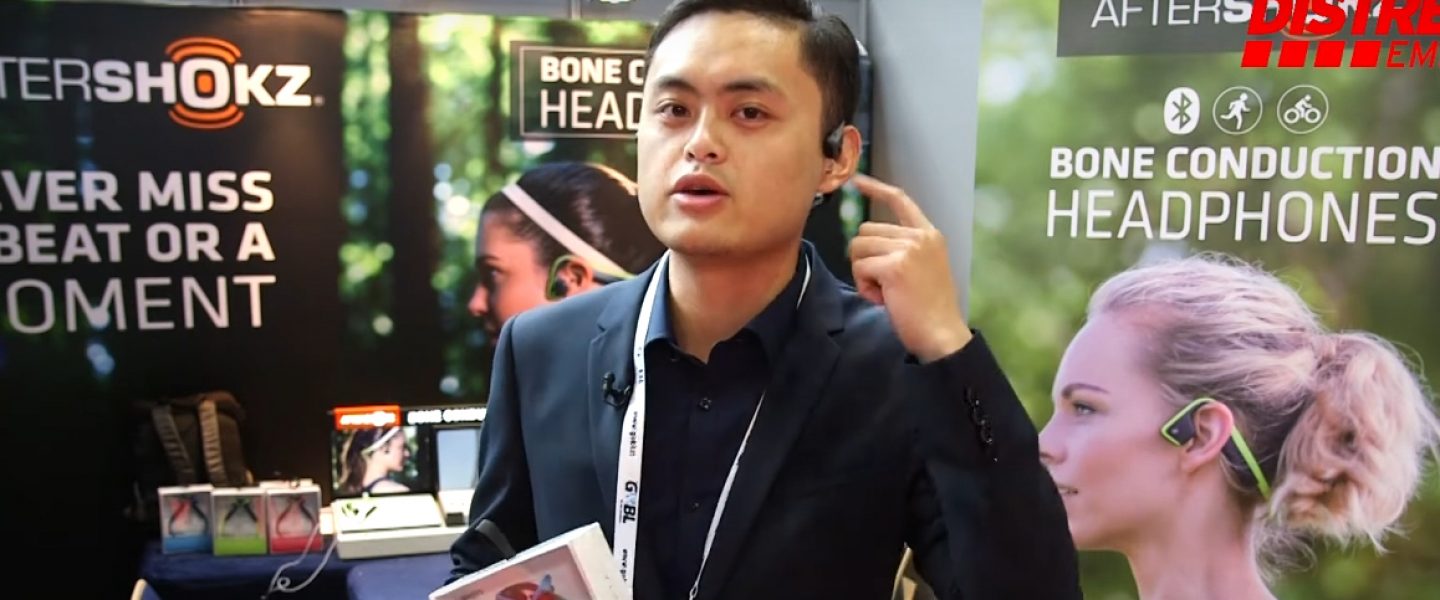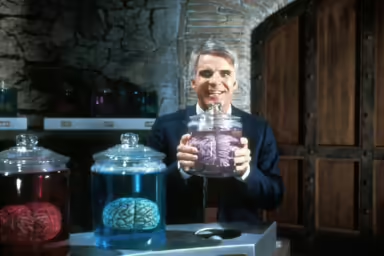Anticipating the latest advances in bone conduction.
|
Listen To This Story
|
To celebrate the New Year, that arbiter of taste The Washington Post has helpfully informed us what is “in” and what is “out.” Out, apparently, are AirPods — you know, those expensive white gizmos you put in your ear and lose at the first left turn. In are something called, as if from a horror film, “bone conduction headphones.”
This contraption rests on your cheekbones, so they’re not noise-canceling. They send the sound waves into your cochlea (look it up), while a strap around the back of your skull prevents you from easily losing the headset.
For the purposes of this article I’m treating this must-have item — and make no mistake: I want a pair, though they’re likely way out of my price range — as a metaphor. I think that’s the least I can do to salute 2023: find a high-end luxury item that none of us actually needs, and put it through my state-of-the-world machine, to show how it encompasses our new thinking. This is more than The Washington Post did, so I’m happy to go the extra distance.
Out: noise-cancellation. In: our own buttery podcasts and musical archive, as well as the world at large within earshot.
I think that’s a healthy development, as long as “bone conduction” (brrr) doesn’t turn out to do something weird to our skeletons. I’m assuming it doesn’t.
This of course could be seen as just a new luxury way to experience the world. You’re not forever in your own isolation booth, oblivious to the world’s ills and concerns; your son is not lost to Call of Duty: Modern Warfare II/Warzone 2.0 (yes, I googled “most popular video game” as part of the extensive research conducted on behalf of this article).
You’re found in your own world, able to listen to a podcast or play a video game while hearing the request to please pass the Brussels sprouts or the honking of the car behind you delivered as a sincere appeal to please get out of the damn overtaking lane.
The implication is that you are still connected to the world, apprised of the latest Russian indignity rained upon Ukraine, aware of this week’s strike action shutting down your commute or holding up your new Fitbit delivery, alert to the hacking cough of the woman sitting at the next table — all while your bones are transmitting the latest Slate Political Gabfest or opening drumbeats of Benny Goodman’s “Sing, Sing, Sing.” That is, you’ve set your own soundtrack to the current ills of the world, listening to Nero’s fiddling while still hearing the crackling wood as Rome burns.
I’m all for this, and still carry around my 20-year-old micro iPod shuffle to control the musical score of my various walkabouts. In that instance, though my ancient, tethered earbuds are not noise-accessing, I’m still blocking out much of the world’s natural clatter. My bones, as far as I know, are completely left out of the equation.
Bone conduction represents the ultimate in multitasking. I’m anticipating the next breakthrough in this direction, say, Ambient Food Consumption: an electronic gizmo that straps to your stomach to consume your food without your having to actually eat it, so you can converse at the dinner table without pausing to apply a forkful (i.e., having your cake and eating it too).
Or perhaps Scent Assent: an electric nose guard that allows you to smell your favorite Chanel number or wine aroma while not missing the natural tangs in the air around you.
Or perhaps Doppelganger Fitness: you play tennis while at the same time lounging in an armchair at home watching the Cowboys crush the Vikings (i.e., you’re simultaneously a sports participant and spectator).
When COVID-19 struck and lockdowns happened, we reverted into our own worlds inside our houses and apartments. And when the threat level reduced, many of us, still enamored of our comfy home turf and controlled environments, failed to return to the office. The series Severance plays on this disconnect, positing a work situation where people sign over their work brains, employed in an office while simultaneously seeming to stay at home, ignorant of their office lives.
Working from home already has some of this dynamic, a blurring of our work and home life, although the conceit is reversed to some extent: While at home we think we’re at the office. This could be considered work conduction: In our bones we think we’re working while we’re actually at home checking our Twitter feed, making ourselves another cappuccino, perhaps even dipping into the next episode of Severance on our laptop.
This might be the advantage of bone conduction, or at least what I’m choosing to take from it for metaphorical sake: controlling our environments while still participating in the world. Perhaps it’s the ultimate consumer product, creating a perpetual leisure time while not forsaking work or social engagement. Forget cold fusion: Surely this would be the invention of our age.
—
J.B. Miller is an American writer living in England, and is the author of My Life in Action Painting and The Satanic Nurses and Other Literary Parodies.




